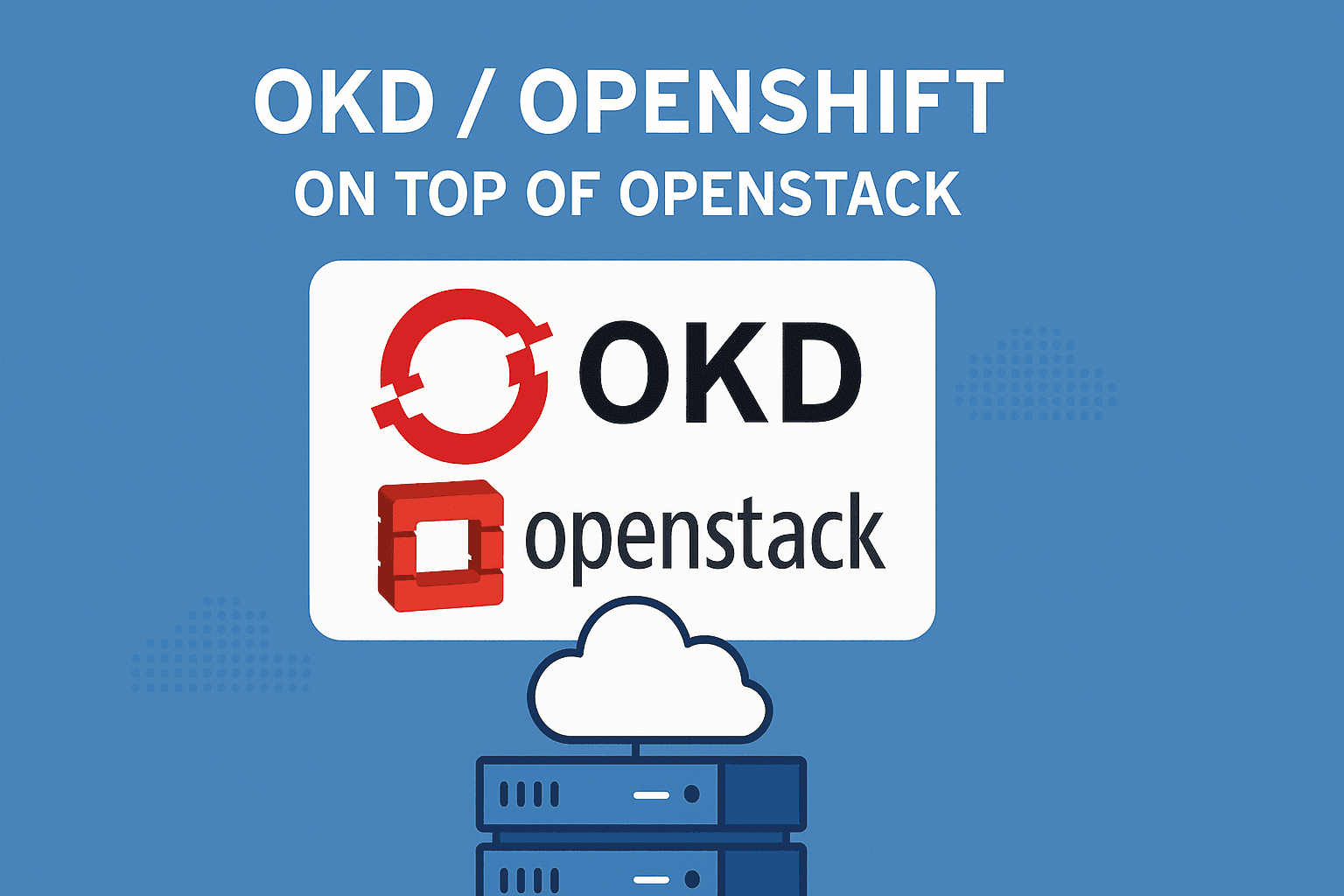
Why OKD on OpenStack Is the Ideal Kubernetes Platform
Deploying OKD (Origin Kubernetes Distribution) on top of OpenStack creates a powerful, flexible private cloud environment ideal for both production workloads and development/test environments. This combination delivers scalable container orchestration, advanced automation, seamless lifecycle management, and strong cost efficiency. In this article, we explore why OKD on OpenStack (especially when deployed using Kolla Ansible) is a top choice for organizations seeking Kubernetes agility without vendor lock-in or escalating cloud costs.
OKD is the open-source upstream of Red Hat OpenShift, providing a full Kubernetes platform with integrated tools like CI/CD pipelines, RBAC, a web console, and automated upgrades. It simplifies application deployment and lifecycle management, making Kubernetes more accessible for teams.
OpenStack is an open-source cloud operating system that manages compute, networking, and storage. It provides an AWS-like infrastructure using virtual machines (VMs), networks, routers, and block/object storage via APIs or a dashboard. Kolla Ansible simplifies OpenStack deployment by containerizing its services, making it easy to maintain production-ready OpenStack environments.
Running OKD on OpenStack gives you a unified platform where your VMs and containerized apps coexist efficiently.
Benefits of Deploying OKD on OpenStack
1. Unified Cloud Environment for VMs and Containers OKD runs on VMs provisioned by OpenStack, allowing organizations to run both legacy workloads (in VMs) and modern apps (in containers) on the same infrastructure. This hybrid model eases application modernization and optimizes hardware usage.
2. Consistent Environments from Development to Production With software-defined networks and compute resources, teams can replicate production environments for development or testing. OKD clusters can be spun up using the same OpenStack blueprints, reducing surprises during deployment.
3. Enterprise-Grade Security and HA OKD includes robust Kubernetes security features like OAuth, RBAC, and network policies. OpenStack enhances this with tenant isolation, security groups, and role-based access. High Availability (HA) configurations are supported for both platforms, including multi-master OKD clusters and redundant OpenStack control nodes.
4. Image-Based Rollbacks and Lifecycle Management OKD supports container image rollbacks and immutable node upgrades using CoreOS. When running on OpenStack, VM images can be managed through Glance to support atomic upgrades and easy rollback in case of issues.
5. Flexible Testing and Development Environments Using Kolla Ansible, you can deploy all-in-one OpenStack nodes and small OKD clusters on a single server for testing. With OpenStack’s tenant isolation, developers can spin up isolated OKD environments programmatically, using automation tools like Terraform or Ansible.
6. Autoscaling of Workloads and Infrastructure OKD supports Kubernetes-native pod autoscaling. When paired with OpenStack, it also enables infrastructure autoscaling: worker nodes (VMs) can be added or removed dynamically using OpenShift’s Machine API and Cluster Autoscaler. This dual-layer scaling keeps your workloads responsive and resource usage efficient.
7. Cost Efficiency and Open Source Flexibility With no per-core or per-node licensing fees, OKD and OpenStack offer a low-cost alternative to public cloud and commercial Kubernetes solutions. Organizations can run on commodity hardware and scale based on real needs. OpenStack multi-tenancy and resource quotas ensure optimized hardware use across departments or clients.
Whether you’re a startup exploring Kubernetes or an enterprise modernizing infrastructure, OKD on OpenStack offers the best of both worlds:
- Production-Ready: Proven HA, security, and integration maturity.
- Developer-Friendly: Fast environment provisioning and easy rollback tools.
- Cost-Optimized: Zero license fees, hardware reusability, and autoscaling.
- Future-Proof: Open standards, vendor independence, and community support.
Additionally, this architecture scales from single-node test labs to full multi-tenant, multi-region production setups. For teams that lack internal expertise or want to offload complexity, managed OKD-on-OpenStack services offer predictable pricing with expert support.
OKD on OpenStack is a robust, flexible, and cost-effective solution for modern cloud-native workloads. With features like dynamic autoscaling, secure multitenancy, easy testing environments, and lifecycle automation, it provides the agility of Kubernetes with the control of a private cloud. For organizations looking to stay competitive while maintaining control over infrastructure and cost, OKD on OpenStack is a smart, future-ready choice.
